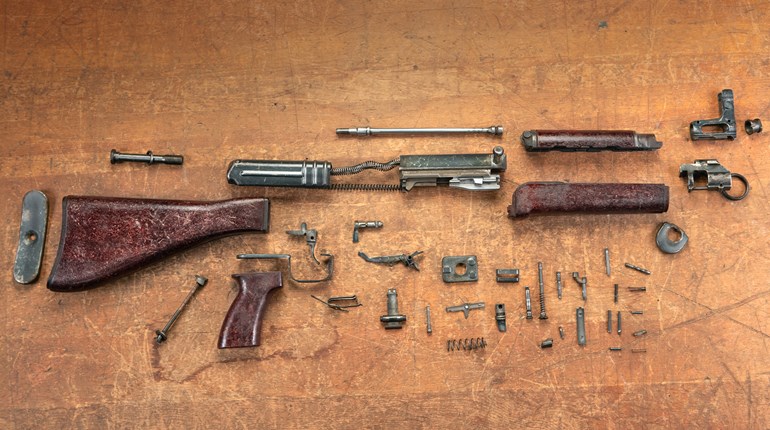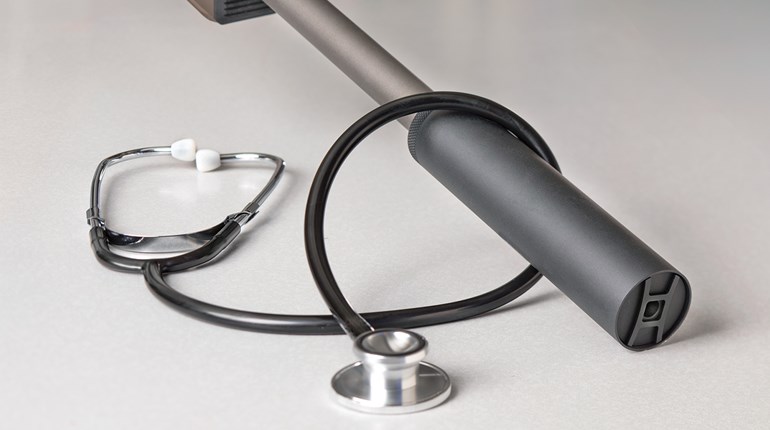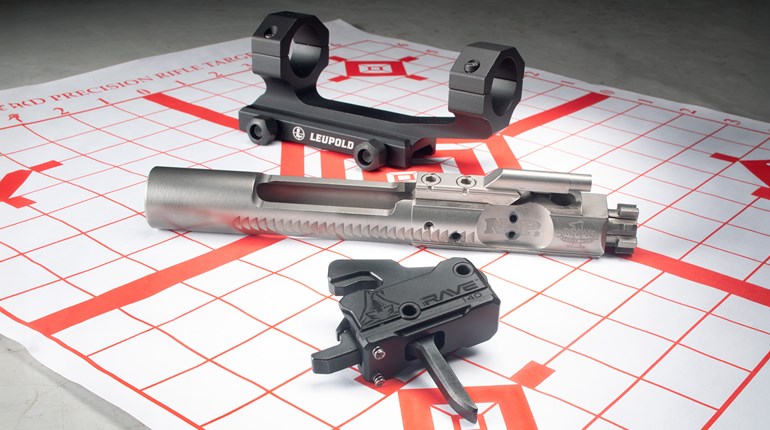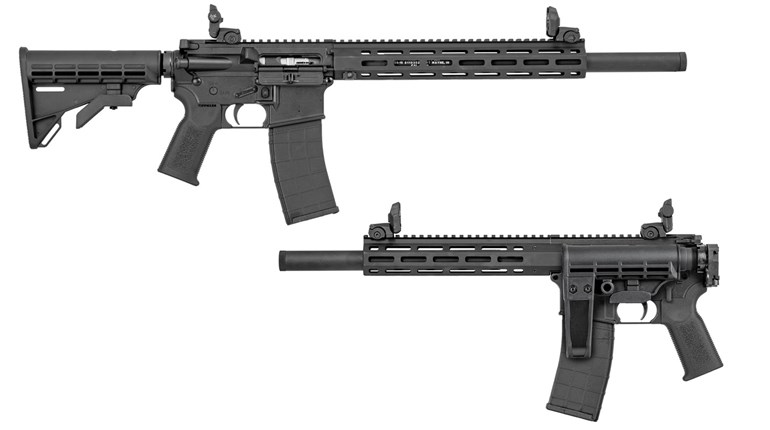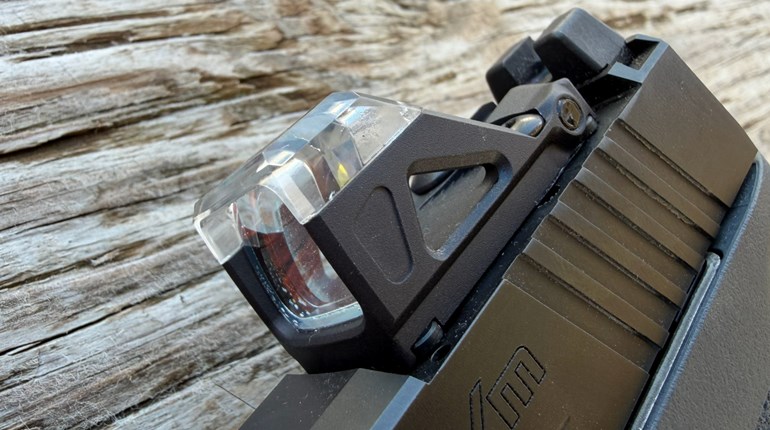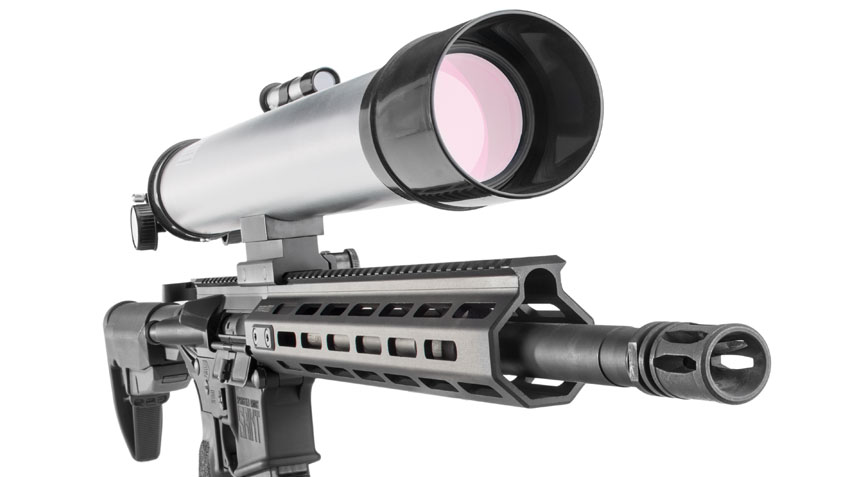
Most modern-day rifle shooters are eventually faced with the question of which optic is the right one for their rifle. There’s seldom a one-size-fits-all approach, unless you plan to do all shooting at a set distance. Current wisdom has it that you need to put a lot of magnification on anything that will be fired beyond arms’ length. How much? If you leave it up to the optical “experts” and sales reps, you will mount as large an objective and as great a magnification range as your budget (and strength) can handle.
The desire to see more of what we intend to shoot is pretty natural. I cannot recall ever hearing someone say “I would have shot better if I could have just seen a little less of the target.” But, there just may be a nugget of wisdom in that sentiment. For the past decade I have relied on a trusty 3-12X riflescope for accuracy testing on nearly every firearm I’ve evaluated, built or worked on. Most of this shooting is done at 100 yards so I have plenty of magnification to work with. I start every session at 12X because I want to see as much detail as possible. But as the day goes on and I sense that I am not shooting at the top of my game, I dial down to 10X, 8X or even 6X. That seldom fails to tighten up my groups. This is counter-intuitive to my little pea brain. I mean, the less of my target I can see in detail, the more difficult it is to aim at tiny things in hopes of printing tiny groups.
But, on the flip side, lower power also makes it harder to see the shooter-induced, small-scale movements of a reticle as we try to lock in on our targets. When we see those movements at high magnifications, we often try to compensate for that wobble and make it worse right about the time we crack off the next shot. OK, I said “we,” but really I mean “me.” The reality is that at lower powers, I cannot chase after a “problem” I do not see. Instead, I can concentrate on the fundamentals of good marksmanship while breaking clean shots.
Lower powers also tend to filter out less light (making for brighter target images) and help reduce the mirage you see downrange. A logical person might ask why I always start on 12X if I shoot better at middle power. Good question. The truth is that I am so used to seeing my targets up close and personal that I cannot stand to give that up…well, until I have no other choice. One of these days I will just learn to trust my equipment andgive up on seeing every hair on a gnat’s behind.
A reasonable scope solution is to get a high-variable-power model and just dial it down instead of hamstringing yourself with a lower top-end power. That works especially well if you need to observe and shoot at long ranges or spot for another shooter. Power ranges like 3-18X, 3.5-21X and 5-25X are very popular for this reason. But, there are at least a couple drawbacks to this approach.
First, bigger, more-elaborate optics cost more. If you need it, then so be it. But, if high magnification is simply in the nice-to-have category, cost bears more consideration. You also have to be willing to carry more weight and a bulkier package, often with larger rings or a taller mount. That is easy enough with a rifle that will seldom be carried farther than the parking lot at your local range. A gun made for humping up and down mountains or running through a competition circuit, though, is a different story. A 30X optic could be very helpful when glassing from ridgeline to ridgeline, but rest assured, you will regret every extra ounce you carry in the first half-hour of climbing.
Modern wisdom tells us that 8X- to 10X-power optics are ill-suited for anything beyond a few hundred yards. I guess that depends on your perspective. I cut my sniper teeth in an era when 10X was the top end for our .308 Win. and .300 Win. Mag. rifle optics. We were pretty adept at using 10X to reach targets out to 800 yards with our .308s and as far as 1,000 yards with our .300 Win Mags. While hitting torso-size targets was not particularly challenging, we lacked the ability to detect and engage smaller targets at long range. That changed as better optics came available, but sometimes the extra power still had to be abandoned for practical reasons.
During several overseas tours, I traded out my 3.5-10X and 4.5-14X rifle scopes for lower-power optics like the 1.1-4X Schmidt & Bender “Short Dot” and the 3.5X Trijicon ACOG. Neither scope was ideal for a sniper in harm’s way. Most missions dictated that I shed as much weight and bulk as possible while dealing with very close targets in addition to reaching out to intermediate distances, at a minimum. Both low-power optics were lighter, more rugged and handled low light much better than my larger day scopes. Still, long-range-precision shots were tricky with either of them. Unfortunately, the much-more-capable 1-6X and 1-8X options we are flush with today were merely wistful dreams in those days.
My current workhorse long gun—a 16-inch-barreled .308 Win.—wears a scope that tops out at 8X. The pair shoots steady sub-.75-MOA groups at 100 yards with Hornady and Federal Premium factory match loads. I can handle larger targets out to at least 800 yards if I am on my A-game. Lest anyone accuse me of being a big-scope hater, I should point out that I keep a 5-25X on standby for long-range, precision work. The big optic shows the little guys how it is done when shooting past 1,000 yards.
In the end, it’s a matter of figuring out what we need our rifles to do most often. After selecting the best optic for those tasks, we must define the limits of what we can and cannot do with it. Expecting an unmagnified red-dot sight to allow you to make hits at 500 yards is about as realistic as selecting a fixed 10X scope for close-quarters combat. Be sure you choose the riflescope that makes sense for you—not for the internet snob crowd.












